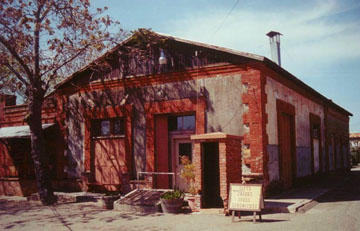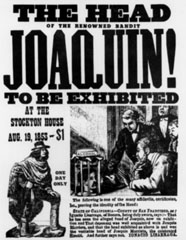|
Stellar Gallery Exhibits - Dia De Los Muertos |
|
||
|
Hornitos History
Pacific Saloon Building (circa 1851) Hornitos Plaza, Hornitos, CA
The
town of Hornitos
is located approx 11
miles west of Hornitos was established by Mexican Miners in 1848. The name derives from above ground tombs / graves built by the miners. The town was named after the resemblance of those graves to small ovens (hornitos), built due to the hard ground which made it difficult to dig deeper graves.
In the 1860s Hornitos became the center for both placer and hard rock mining in the region. The population grew quickly to an estimated 15,000 people between 1860 and 1870, then dwindled with the declining mining industry to less than 100 persons by 1920.
Hornitos was known as a rough and tumble frontier town, famous for its fiestas, fandangos, gambling and violence. Some businesses were connected by underground tunnels, and for entertainment there were chicken races, bull & bear fights and cock-fights. The infamous bandit Joaquin Murieta is said to have frequented the dance halls and saloons, and to have had secret escape tunnels from his favorite hangouts.
From Wikipedia....
The Rangers severed Garcia's hand and the alleged Murrieta's head as proof of their deaths and preserved in a jar of brandy. The jar was displayed in Mariposa County, Stockton, and San Francisco, and later traveled throughout California; spectators could pay $1 see the remains. Seventeen people, including a Catholic priest, signed affidavits identifying the remains as Murrieta's, and Love and his Rangers accordingly received the reward money. However, a young woman who claimed to be Murrieta's sister said she did not recognize the head and insisted that it could not be her brother's, since it did not have a characteristic scar Murrieta had. In addition, numerous sightings of Murrieta were reported after his death supposedly took place. Many people also criticized Love for displaying the remains in large cities and not in the mining camps, where Murrieta might have been recognized. It has even been alleged that Love and his Rangers murdered some innocent Mexican travelers and made up the story to claim the reward money. The preserved head was destroyed in the 1906 San Francisco Earthquake.
|
|||
|
_______________________________________________________
|
|||
| BACK to 2011 | |||
|
|
|||
|
Copyright © Stellar Gallery |
|||


